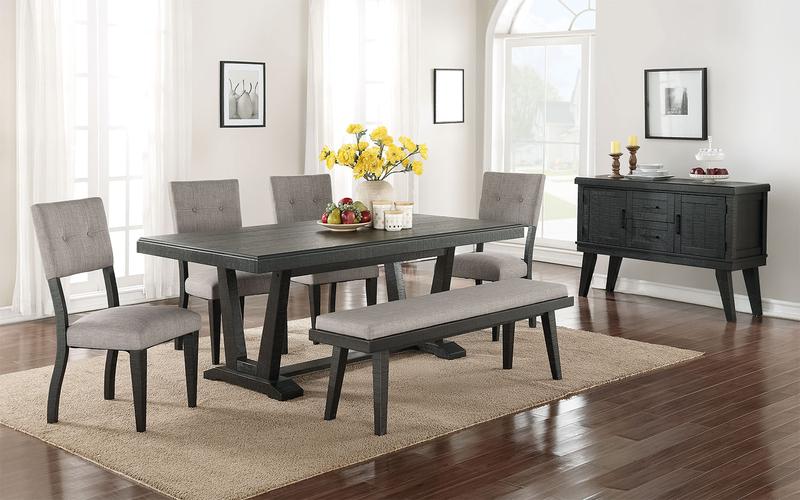The devil, as they say, is in the detail, and nowhere is this more true than for the home DIYer. But when it comes to modern day DIY painting the average Joe (or Josephine) needn’t feel like they have entered the Ninth Circle of Hell every time their architraves need doing.
Gorgeous, glossy skirting boards, door frames, windows, cupboards or doors are the devilish details which transform a good paint job into something truly special. Slapping on a coat of left-over wall paint - or worse, ceiling white - is simply not going to give you both the beauty and durability that hard-wearing, designated trim paint guarantees. It is absolutely worth taking the time and effort to perfect this part of your painting project. You will regret the couple of hours saved when you have to stare at chipped window frames or flinch every time Junior uses your skirting boards as the finish line in his toy car race.
Old-school architrave and trim painting was once a nightmare undertaking requiring the relocation of entire families and the consumption of multiple bottles of turps. But new generation enamels, such as the increasingly popular water-based Dulux Aquanamel, or Berger Premium Door & Trim, have given DIY painters some fabulous options for this part of their job. There’s no need to be scared any more.

The main complaints about first generation - or old-school - trim paints are usually in the order of: overpowering fumes; yellowing of white trims with age; and turps wash-up. New trim paints do what all younger generations like to do - show up the older ones with their impressive skills. These days we have clever young things such as Dulux Aquanamel Semi Gloss - a tough, non yellowing, water based interior/exterior semi gloss enamel that is fast drying, low odour and easy water wash up (also available in High Gloss).
Of course, some people will still prefer an oil-based enamel such as Dulux Super Enamel High Gloss - a tough, traditional, oil based interior/exterior high gloss enamel (also available in Gloss). Super Enamel is particularly suited to high-traffic commercial and industrial areas.
The last step, before the really fun part of actually painting, is to choose the colour for your trims. By now anyone who has ever watched a real-life couple veer dangerously close to the divorce courts on a reality home-renovating TV show will know that ‘white’ isn’t just white, in fact it’s a whole topic all on its own. Not to mention, more and more people are now skipping white altogether for trims and instead choosing a complementary colour to their wall colour, or even sticking with their wall colour for the trims.
In any case, it is always best to experiment with sample pots for your trim, as you would your walls. If you feel like you need some guidance about how to bring these colours together a Colour Consultant is a great resource to ensure that you are confident and comfortable with your colour choices.
Once you’ve picked your trim paint and colour it’s time to get down to the prep. Preparation of the surface is a step you do not want to skimp on as glossy surfaces show more imperfections than matt. Ensure you sand all gloss surfaces down to matt and fully wipe down the surface before applying a prepcoat such as Berger Premium Triple Prep Acrylic or Dulux 1 Step™ Acrylic Primer Sealer & Undercoat.
Once your prep is set you can begin the application of your enamel. A few tips to remember are:
- Trims are usually the last part of the painting job to be done. As a rule, start with ceilings before moving onto the walls. Then paint the trims and then windows and doors before finally painting the skirting boards.
- Using a good quality brush is essential. Tapered brushes from 28 to 35mm are ideal for trim work. Some experts say that a synthetic filament brush is a good choice as it doesn't lose bristles and leaves less brush marks. Go on, splurge on a great brush - you know you want to.
- While a steady hand is essential for a brain surgeon, the less nimble-fingered home handyperson is blessed by the invention of blue painter’s tape. Use a good quality, low-tac painter’s tape for best results and remove the tape before the paint has dried to avoid the paint chipping or cracking.
- Remove or loosen fittings such as door handles and knobs and knockers to make your job easier.
- Use a small 110mm to 160mm glossing roller for larger surfaces such as doors.
- Apply two coats, waiting for the first coat to dry before applying the second. Do not sand between coats.
As daunting as tackling trims can seem from the outset, remember the new water-based enamels really do take much of the hard work and the smell out of the job. So, take heart and take to your trims with gusto.